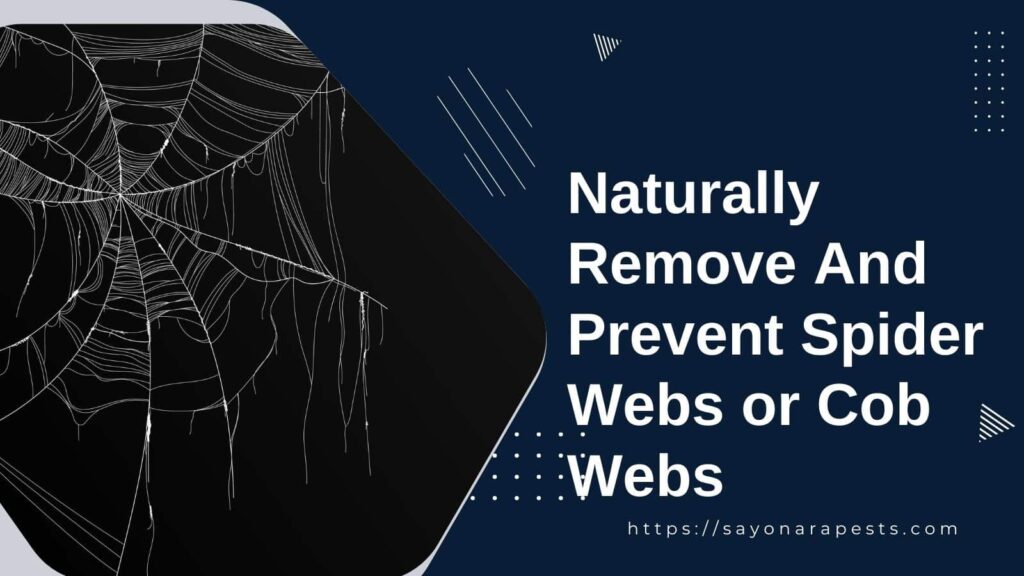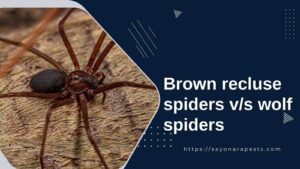There are many ways to remove spider webs or cobwebs from your home. This article will explore some of the most popular and natural ways to do so.
Before we discuss how to remove spider webs or cobwebs, it is essential to understand why they are there in the first place. Spider webs or cobwebs are usually created because spiders spin their web to capture prey.
However, sometimes these webs can get out of control and become a nuisance. If you have noticed an influx of spider webs or cobwebs in your home, it is likely because spiders are abundant nearby.
What is a spider web?
A spider web, also called a cobweb, is a network of silken threads produced by spiders. Spider webs can be found in various shapes and sizes, depending on the type of spider that created them.
The primary purpose of a spider web is to capture prey. Most spiders are not large enough to kill prey on their own, so they build webs. The spider sits in the center of its web and waits for an insect or other small animal to entangle. Once the prey is ensnared, the spider quickly wraps it up in silk and enjoys a meal.
While all spiders build webs, not all use them to capture prey. Some spiders build webs as a form of communication, to protect their eggs, or to help them move around.
What are the different types of spider webs?
Orb web:
The most common type of spider web, orb webs, are built by spinning a radial pattern of silken threads from an anchor point. The spider then waits in the center of the web for prey to become entangled.
Tangle web: Tangle webs are produced by spiders that do not build an orb web. Instead, they spin a random tangle of silken threads in hopes that prey will become ensnared. These webs are often found in dark corners or among vegetation.
Funnel web:
A variation of the tangled web, funnel webs, is built with a narrow opening that leads to a broader, tangled web. The spider waits at the opening for prey to become caught in the web.
Sheet web:
Sheet webs are horizontal layers of silken threads attached to vegetation or other objects. These webs are often used as a form of communication, to protect eggs, or to help the spider move around.
How do spiders build their webs?
All spiders produce silk, but only some use it to build webs. Spinning a web begins with the spider secreting a liquid from special glands in its abdomen. This liquid hardens into silk when it comes into contact with air.
The spider then uses its legs to spin the silk into a web. The type of web that is built depends on the spider species and its environment. Some spiders build webs only a few centimeters wide, while others build webs that span several meters.
What is a cobweb?
A cobweb is an old or abandoned spider web. Cobwebs are usually found in corners or other areas where spiders are not active.
These webs are often dusty and filled with debris.
Remove Spider Webs with a Broom
One of the simplest and most effective ways to remove spider webs is with a broom. A broom can reach high corners and other areas where spiders are likely to build their webs.
To remove spider webs with a broom, simply sweep the web away. Be sure to dispose of the web in a trash can or outdoors to prevent spiders from rebuilding their homes in your home.
You can apply a broom with petroleum jelly to attract and trap spiders.
Remove Spider Webs with a Vacuum Cleaner
Another tool that can be used to remove spider webs is a vacuum cleaner. A vacuum cleaner will remove the web and the spider itself.
To remove spider webs with a vacuum cleaner, simply turn on the vacuum and hold the nozzle against the web. The suction will quickly remove the web. Be sure to dispose of the spider in a trash can or outdoors to prevent it from rebuilding its home in your home.
You can also use a vacuum cleaner to suck up spiders themselves. This is an effective way to get rid of spiders without using insecticide.
Remove Spider Webs with a Damp Cloth
If you do not have a broom or vacuum cleaner, you can remove spider webs with a damp cloth. A damp cloth will adhere to the web and allow you to remove it from surfaces.
To remove spider webs with a damp cloth, simply wet the cloth and press it against the web. The web will stick to the cloth and can be removed easily. Dispose off the web in a trash can or outdoors to prevent spiders from rebuilding their homes in your home.
Remove Spider Webs with Insecticide
Insecticides can be used to kill spiders and remove their webs. Many different types of insecticide can be used, so be sure to select one that is safe for use around children and pets.
To remove spider webs with insecticide, simply spray the webs with the insecticide. The spiders will die, and the web will be removed.
Insecticides can also be used to kill spiders themselves. This is an effective way to eliminate spiders without using a broom or vacuum cleaner.
Prevent Spider Webs with Peppermint Oil
Peppermint oil is a natural spider repellent. This oil can prevent spiders from entering your home and building webs.
To prevent spider webs with peppermint oil, simply place a few drops of oil on a cotton ball and wipe it on surfaces where spiders are likely to enter or build webs. The scent of the oil will repel spiders and prevent them from building their homes in your home.
Prevent Spider Webs with Vinegar
Vinegar is another natural spider repellent. This acidic liquid can prevent spiders from entering your home and building webs.
To prevent spider webs with vinegar, simply place a bowl of vinegar in an area where spiders are likely to enter or build webs.
Prevent Spider Webs with Citrus Peels
Citrus peels are another natural spider repellent. The oils in these peels can prevent spiders from building webs.
To prevent spider webs with citrus peels, place a few peels in an area where spiders are likely to enter or build webs. The scent of the peel will repel spiders.
Prevent Spider Webs with Lavender Oil
Lavender oil is another natural spider repellent.
To prevent spider webs with lavender oil, simply place a few drops of oil on a cotton ball and wipe it on surfaces where spiders are likely to enter or build webs.
Prevent Spider Webs with Peppermint Plants
Peppermint plants are another natural spider repellent. These plants release a robust minty smell that can be used to prevent spiders from entering your home and building webs.
Prevent Spider Webs with Cinnamon
Cinnamon spice can prevent spiders from entering your home and building webs.
Simply sprinkle cinnamon on surfaces where spiders are likely to enter or build webs. The scent of the cinnamon will repel spiders.
Prevent Spider Webs with Cloves
Cloves are natural spider repellents to prevent spiders from entering your home by simply placing a few cloves in an area where spiders are likely to build webs.
Prevent Spider Webs with Garlic
Place a few cloves of garlic to repel spiders. This pungent herb can deter spiders and prevent them.
Similarly, you can also prevent spider webs using lemon balm, rosemary, thyme, and tea tree oil.
There are many ways to remove spider webs or cobwebs from your home. You can vacuum them away, brush them off, knock them down with a broom, or pour soapy water on them and wipe them off with a cloth.
You can also use a vacuum cleaner with a hose attachment to remove cobwebs from ceiling corners. Another option is to apply petroleum jelly to the end of a broom handle and reach up to the cobweb.
Finally, you can wrap a rubber band around the bristles just below the petroleum jelly and dip the end of the broom in soapy water before swiping at the cobweb until it falls.
Whichever method you choose, repeat as necessary until all webs are gone.


